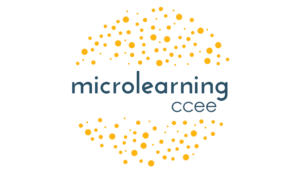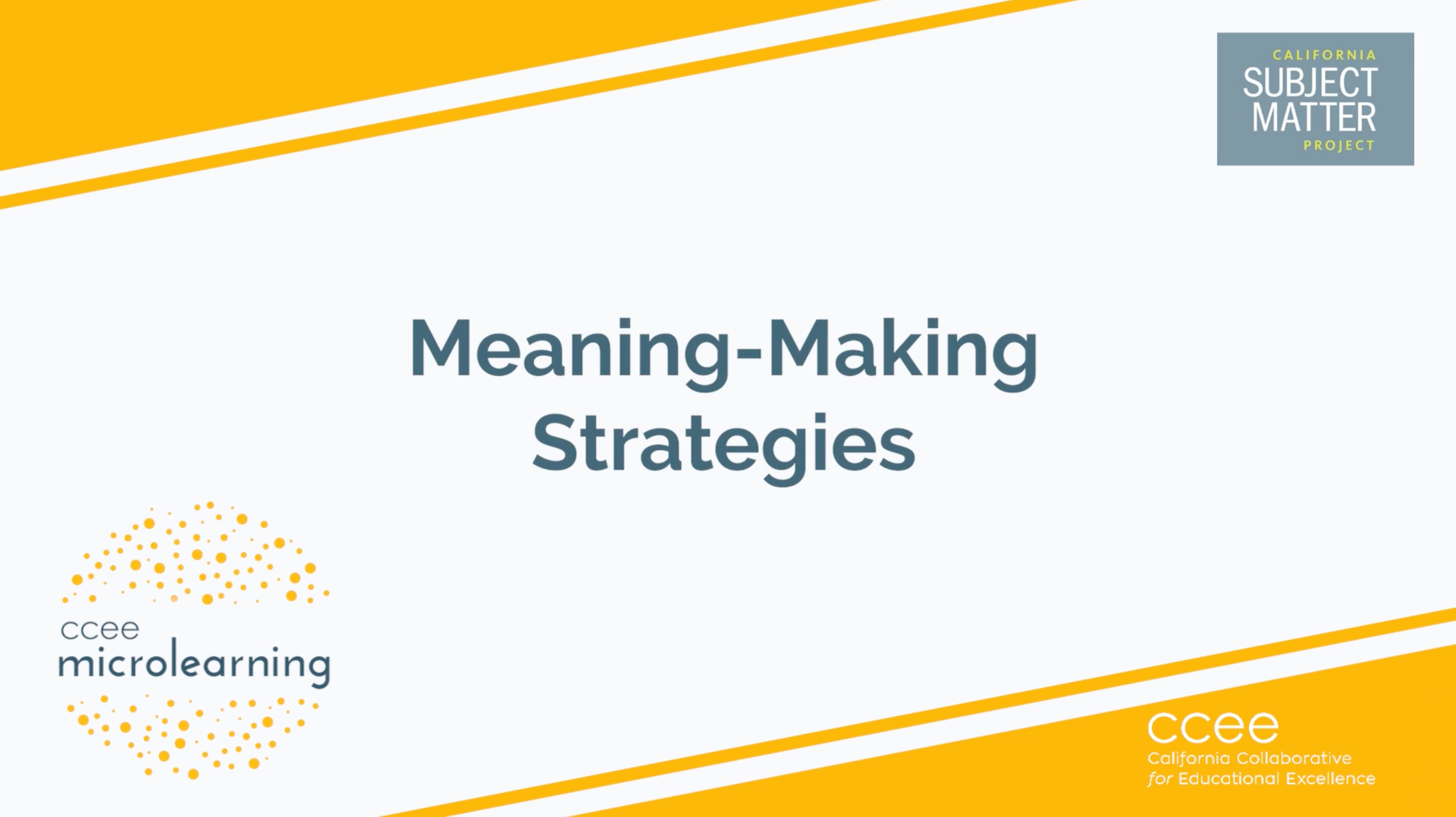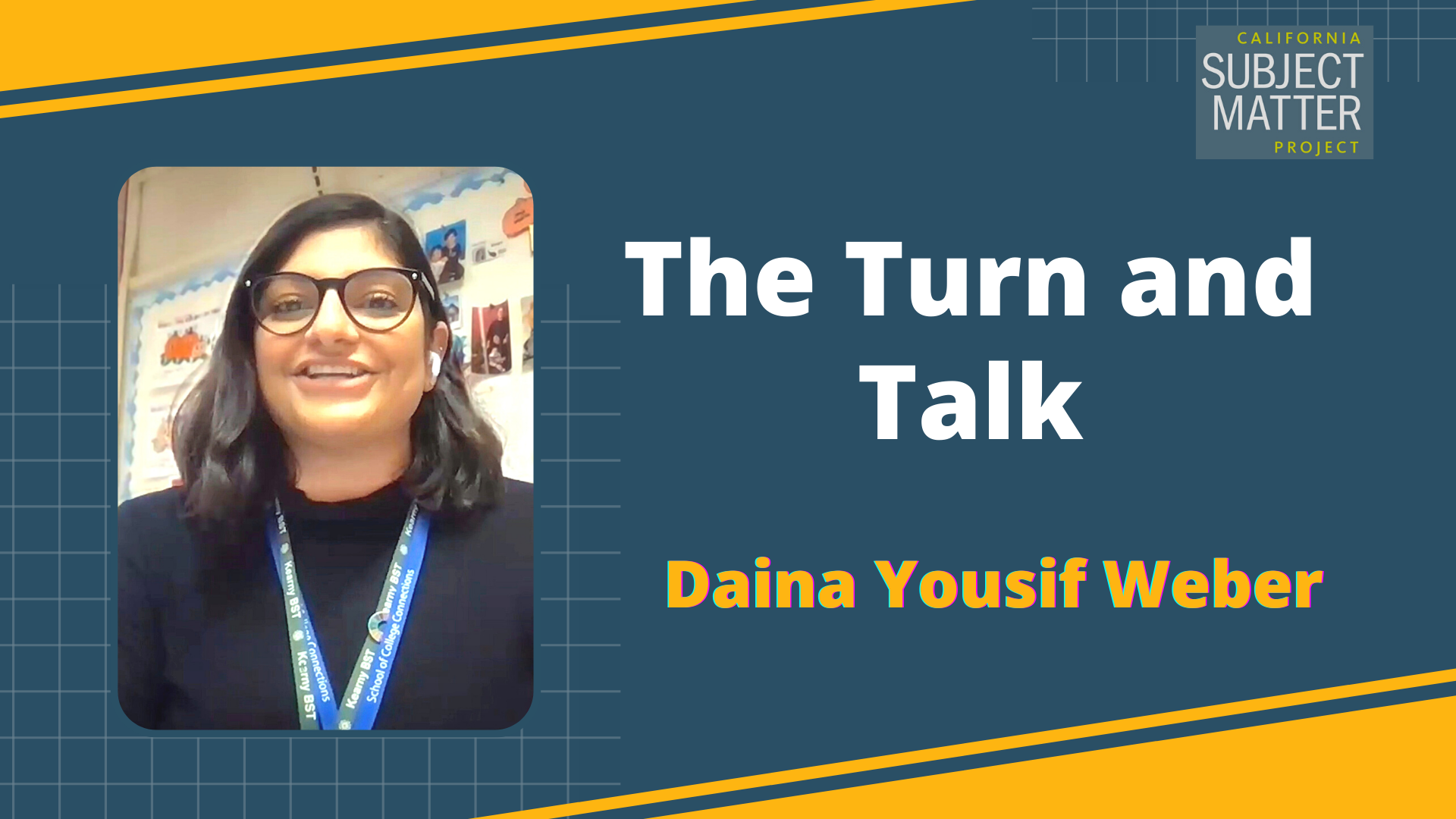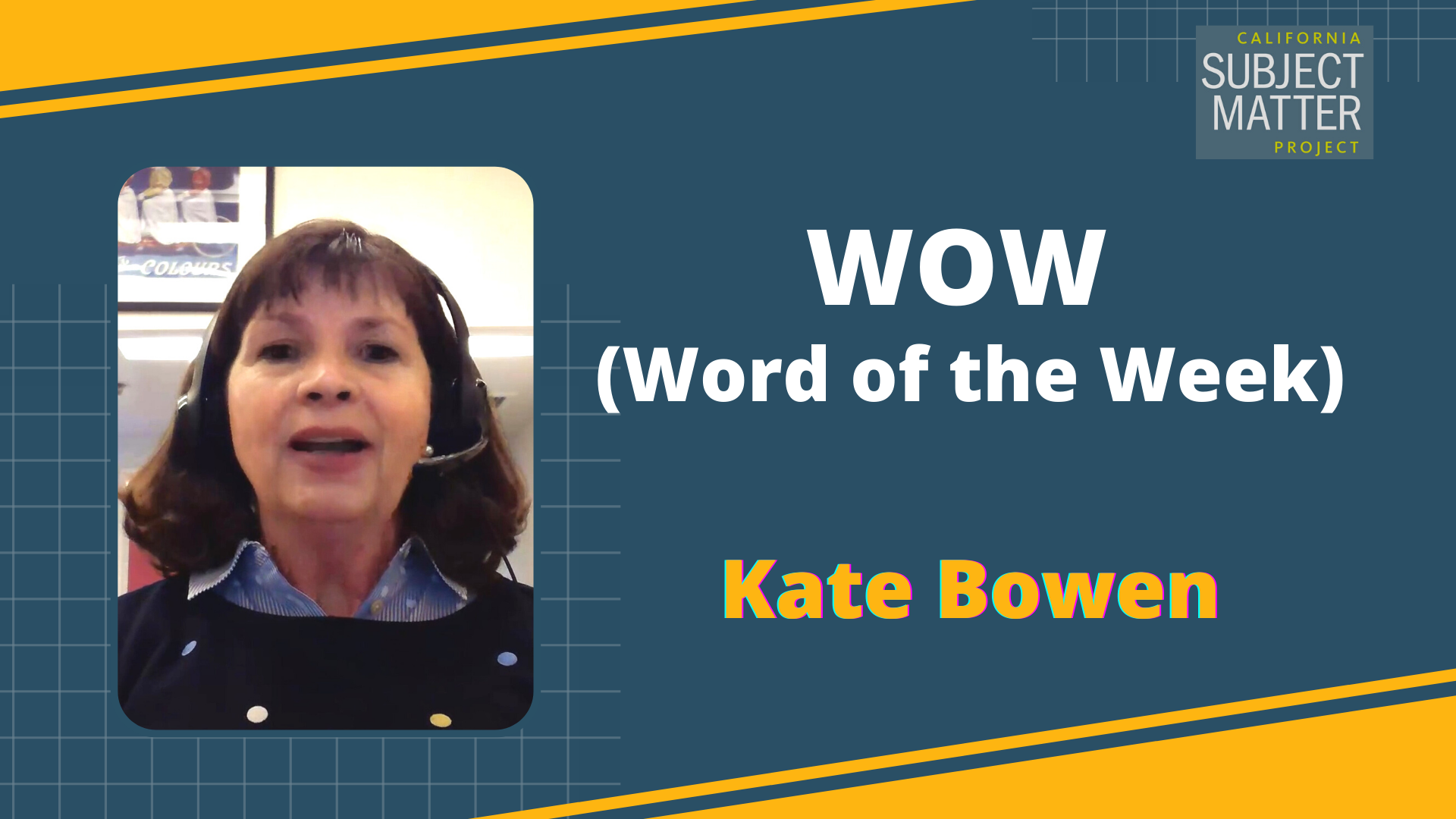Watch the Video
Presenter
Developed by Carla Evans & Jeri Thompson
National Center for the Improvement of Educational Assessment
Transcript
Welcome to Module 4: Formative Assessment: Supporting teachers as they involve students and their peers in the formative assessment process. This module is part of Micro-Course 3: Supporting teachers to accelerate learning using formative assessment processes in the classroom, created by the California Collaborative for Educational Excellence and the Center for Assessment. There is an Introduction Module to Micro-Course 3 that explains the purpose, organization, and intended use of each micro-course and should be watched first, if you have not already done so.
In preparation for digging deeper into our main topic, please list at least two self-assessment and two peer-assessment strategies that you could look for when conducting brief walk throughs or more formal teacher observations.
Please pause the video and respond to this question either alone or with colleagues. After your reflection or discussion, resume playing the video.
To situate the content in this module, let’s review the definition of formative assessment.
Assessments are not formative or summative by design, they are formative or summative based on use. The formative assessment process is defined as “a planned, ongoing process used by all students and teachers during learning and teaching to elicit and use evidence of student learning to improve student understanding of intended disciplinary learning outcomes and support students to become self-directed learners.”
In other words, formative assessment is assessment for learning. In the formative assessment process, teachers and students collect data while learning is taking place.
In previous modules we provided Dylan Wiliam’s formative assessment framework that supports the implementation of effective formative assessment strategies. This module takes a deep dive into the framework and explores how school leaders can support teachers as they involve students and their peers in the formative assessment process.
In Module 1 we provided a Formative Assessment Process Discussion Tool for School Leaders. That tool included two prompts related to the topic of this module that school leaders could use to collect evidence of self- and peer-assessment strategies occurring in classrooms. However, that module just scratched the surface in terms of what self- and peer-assessment mean and various strategies and tools that could be employed in classrooms.
In this module, school leaders will examine self- and peer-assessment in more detail. The goal is to help school leaders support the implementation and change process around these practices in their schools and districts.
One key aspect of formative assessment that we mention in other modules is activating students as owners of their own learning. In order for this to happen, and for students to take an active role in their own learning, students must continuously ask themselves:
– Where am I going or what are the goals? At this point students must understand the learning target and success criteria.
– Where am I now or what progress is being made toward the goal? This requires ongoing formative assessment including self- and peer-assessment. And
– What do I need to do next or what activities need to be undertaken to make better progress? In order for students to close the gap between the intended and current learning, instructional adaptations are made by the teacher and learning adjustments are made by the student.
This module focuses on the last two aspects of Dylan Wiliam’s framework related to embedded formative assessment strategies: the role of the learner in activating their own learning and peers as learning resources. Modules 1-3 focus on the other parts of the framework.
One key aspect of formative assessment that we mention in Module 1 is activating students as owners of their own learning. In order for this to happen, and for students to take an active role in their own learning, students must continuously ask themselves:
– Where am I going or what are the goals? At this point students must understand the learning target and success criteria.
– Where am I now or what progress is being made toward the goal? This requires ongoing formative assessment including self- and peer-assessment. And
– What do I need to do next or what activities need to be undertaken to make better progress? In order for students to close the gap between the intended and current learning, instructional adaptations are made by the teacher and learning adjustments are made by the student.
When students engage in the formative assessment process they are encouraged to become self-regulating learners. Self-regulating learners gather evidence about the expectations of the learning target and where they are in their own learning towards those targets. This in turn allows them to use that information to choose strategies for success, which is closely tied to motivation. In other words, self-regulation weaves together cognition and metacognition which is supported by self-motivation. Let’s examine this more closely.
Students must clearly understand the learning intentions and success criteria in order to apply metacognitive strategies towards setting appropriate goals in relation to the learning targets. This means that the student is able to articulate the lesson or unit learning target and describe what success looks like on the assignment.
Students need to determine where they are now in the process of achieving the success criteria and to make decisions on how to fully achieve the learning target. In order to do this students need to engage in the processes of:
1) Metacognitive knowledge or identifying what one knows
2) Metacognitive skills or identifying what one can do,
3) Metacognitive ability or identifying what one knows about one’s own cognitive abilities, and
4) Metacognitive experience or what one has learned from previous experiences.
When students engage in metacognitive activities, performance improves because they think about previous experiences and how those can be used and applied to this new experience. This allows students to generalize what they have learned to novel situations, and consequently as they demonstrate success along a continuation of learning, motivation is also positively affected since success begets success.
One way to marry the formative self-assessment questions of where am I going, where am I now, and what do I need to do next using their metacognitive strategies is having students set goals.
Goal setting is when students set a goal toward the learning targets and create and monitor a realistic plan to achieve it. Goal setting provides students with a learning target that they can see and understand and helps them to gather appropriate and relevant information about how they are doing in pursuit of that goal. Goal setting allows students to focus on the learning task and the learning target.
Effective classroom goals are precise, detailed, and linked to the current classroom task not to general academic aims, such as writing a better argumentative essay. Goal setting has been shown to increase student effort, student persistence, and a student’s desire and capacity to learn new strategies. How does this occur? Goal setting focuses students’ attention on the gap between where they are and where they are heading and to motivate students by seeing that they are making progress.
Helping students set goals requires guidance in understanding the success criteria and being able to determine the “bite-sized” chunks and realistic steps to ensure success. In other words goal setting provides a vehicle to marry the formative assessment questions:
– Where am I going?
– Where am I now? and
– What do I need to do next?
with the metacognitive lenses:
– What I know
– What I can do
– What I know about my own cognitive abilities, and
– What I have learned from previous experiences that I can apply to this new situation.
Think about a goal that you have created for yourself. How did you consider the formative assessment questions and the metacognitive lenses when you created this goal? Please pause the video and respond to this question either alone or with colleagues. After your reflection or discussion, resume playing the video.
To build upon the previous slide, self-assessment occurs when students review their own work to identify their areas of strengths and weaknesses, take responsibility for their performance, and monitor their achievement for the purpose of improving their learning.
Self-assessment as part of the formative assessment process requires students to have opportunities to practice applying concepts and skills, recognize the successful characteristics of the concepts and skills in their own work, and translate their self-assessment judgments into action plans for improvement.
Initially, at least, self-assessment should occur after teachers have provided feedback and modeled for students how to observe their work and how to evaluate it against the criteria. Self-assessment is feedback. Self-assessment in the way we are describing is not about students determining their own grades, but rather it involves articulating goals, checking progress, and revising one’s work.
Take the next 5 minutes to watch the video of students and teachers engaging in and reflecting on self-assessment. The video explains the implementation of self-assessment in the classroom and describes what students can gain from these practices. Then resume this presentation when you are done.
Strategies for self-assessment range from those that focus on one particular lesson, assignment, or topic to those that are more broad and encompass self-assessment over a period of time (e.g., end of unit, end of the school year, etc.).
A couple broad self-assessment strategies include:
– Reflective journaling where students are asked to think back on their learning growth and progress over a specified amount of time,
– Students gathering work to put into a portfolio intended to demonstrate growth or achievement to share with their parents during student-led conferences.
Other self-assessment strategies include those a teacher may use before, during, or after instruction to encourage students to reflect on their own learning progress and self-assess where they currently perceive themselves. Examples include:
1) Using colored pencils or highlighting rubrics can help students self-assess. The student highlights in a given color areas of the rubric paired with areas in their written work or math problem that they believe fits the rubric criteria for success. They would then use a different color highlighter for areas that they see as needing improvement. The highlighting fosters a dialogue between the teacher and student and for the student to set a new goal for improvement.
2) Indicator systems such as thumbs up/thumbs down, happy/sad faces, red, yellow, green card indicating level of understanding, letter cards, such as A, B, C, D, for rating the level of understanding along a continuum, yes/no cards, individual whiteboards and so on also help students self-assess. This also provides the teachers with information about what students understand and where they need additional support.
3) Reflection questions that allow students to consider how much time was spent on their individual effort. Self-reflection questions can include:
a) How much time did you spend on learning/studying/revising the assignment?
b) How carefully did you work?
c) How did you handle new ideas or aspects of the assignment you weren’t sure about?
d) Did you seek any help?
4) Learning logs: Students are asked to respond to no more than three of the following prompts:
– Today I learned…
– I was surprised by…
– The most useful thing I will take from this lesson is…
– I was interested in…
– What I liked most about this lesson was…
– One thing I am not sure about is…
– The main thing I want to find out more about is…
– After this session, I feel…
– I might have gotten more from this lesson if…
In order for self-assessment to be effective, the teacher will want to note student responses to these questions and consider whether the student can tell you about their strengths and weaknesses with accuracy and if they see the value of reflection by internalizing the process and beginning to independently engage in the process regularly and routinely. However, students can be taught to internalize the process by being asked to evaluate their own work regularly, to set their own goals and monitor their progress, and to describe their own strengths and weaknesses. Additionally, the classroom environment must be one that allows students to ask questions and to see mistakes as opportunities for learning.
As a school leader, you play a key role in helping to promote and encourage best practices. One way to do that related to formative self-assessment is to identify what you could look for as you conduct brief walk throughs or observe teaching in your school or district. What types of strategies or tools would you expect teachers to employ? Please pause the video and brainstorm either alone or with colleagues. Then resume playing the video when you are done.
Now that you have a list, make a note on your calendar to try it out. Conduct some brief walk throughs and reflect on what you notice. Perhaps you will find there is one or more teachers who employ formative self-assessment strategies really well in their classroom. If so, is there a way for other teachers to observe in that classroom or to facilitate conversations at the next staff meeting about formative self-assessment? What are the barriers teachers face? What types of resources and supports might teachers need to help them build their professional practice in this area? How can you support that development?
As you conduct the walk throughs, remember that teachers are also growing and developing professionally, just like students. The type of formative feedback given to students to improve performance can be mirrored in the way school/district leaders support teachers in their journey from novice to expert teachers. The Formative Assessment Rubrics, Reflection and Observation Tools can assist you in seeing teacher practice along a continuum and providing formative feedback and support to help them provide students with more opportunities for self- assessment.
We turn now to peer assessment. Formative peer assessment occurs when learners provide feedback to one another. Peer assessment does have a number of advantages for both the students providing the feedback as well as those receiving it because it involves thinking about learning. And consequently the peer feedback process can deepen students’ understanding of their own learning whether they are the recipient or the receiver. This occurs because students need to understand the learning targets and success criteria in order to provide and understand feedback.
Additionally, when students engage in the peer feedback formative process on a regular basis they can also provide feedback on the improvements that their peers have made as a result of the learning process. Let’s look at a couple of examples.
In this secondary school experience, students have been learning about drafting a persuasive speech that has the following success criteria:
– Introduce your topic in a way that engages your audience.
– Appeal to pathos (emotion), logos (logic), and/or ethos (credibility).
– Use a combination of visuals and multimedia to reinforce important points.
– Provide an ending that provides a call to action.
Once a student presents, their peers can consider the extent to which the criteria have been met or not met, they can provide areas of strength and constructive feedback about how their classmate could improve his or her speech.
Students are taught the types of comments to make based on previous teacher feedback, modeling, and thinking aloud, such as: Starting your speech with an imagined “what if” scenario was a good way of getting the audience’s attention and set the tone for the rest of the speech. I think that the ending could have been strengthened if you returned to the scenario when you had your call to action. By the end of the speech, I had forgotten why you had this call to action. Your visuals were really helpful as you made each of your points and they really appealed to my emotions.
In this secondary school math example, students have been learning about volume. The series of lessons has the following success criteria:
– I can explain what it means to find the volume of a solid figure and how volume is measured.
– I can find the volume of cylinders, pyramids, cones, and spheres by using formulas.
– I can solve real-world math problems using my understanding of volume.
You’ll notice the three success criteria focus on a student’s conceptual understanding, procedural fluency, and application of volume. After completing an instructional performance task, students are asked to share their work with peers and receive feedback.
Students are taught the types of comments to make based on previous teacher feedback, modeling, and thinking aloud. Using the ladder of feedback, for example, peers might provide feedback such as: We noticed you correctly identified the formulas for cylinders, pyramids, cones, and spheres, but when you went to apply the formulas in the context of the real-world math problem you seemed to have a hard time applying the correct formulas. Consider breaking the complex figure into distinct solid figures first and then applying the formulas. We used our pencil to draw over the complex figure to help visualize the different solid figures within the complex figure.
In this elementary science example, students are asked to plan an investigation for a fair test of an engineering design. The success criteria for the investigation includes:
– Explain what you want to measure and what tools will be used.
– Identify the key variable and factors that are controlled and held constant.
– Make predictions about what would happen if a variable changes.
Students worked collaboratively to plan their investigation and then orally shared their plan with another group for feedback. Their plan included measuring the time it would take for a feather to fall to the ground. The design would change the type of the feather, but the height at which the feather is dropped would stay the same.
Students are taught the types of comments to make based on previous teacher feedback, modeling, and thinking aloud, such as: Your design shows that you know what you are going to measure as “time”. You’ve identified the control variable as the height that you will drop the feather and the tested variable as the size of the feather. But we’re not clear about your predictions of what will happen with changing the size of the feather. Can you provide a prediction with an explanation?
There are many possible peer assessment tools and strategies that teachers in your school or district could employ. We provide four of those tools with links on this slide. The key purpose of each is to provide a structured protocol or way for students to constructively share feedback with one another. This positive culture of critique must be intentionally built over time and monitored. A teacher’s role is to set aside time for peer feedback to occur, model how peer feedback sessions should look which we discuss more on the next slide, and monitor student interactions in order to ascertain what additional modeling or supports students may need to provide high-quality feedback to one another. Also, remember that students must have an opportunity to edit or revise their work based on the peer feedback so teachers must ensure that instructional plans allot the time necessary for this review and revision component.
Similar to self-assessment, the success of peer-assessment stems from teaching students the skills necessary for providing specific and meaningful feedback aligned to the learning targets and success criteria. One strategy includes teaching students sentence starters for providing feedback, such as: “Have you thought about …?” or “I wasn’t clear what you meant when you said…”. Another strategy includes role playing with a student or another teacher on how to give feedback on an assignment as an exemplar of what peer feedback sounds like. Additionally, a fishbowl situation could be used in which two students provide feedback to each other while the remainder of the class listens and observes. The students could then discuss what they heard and how to improve or practice engaging in providing feedback with a partner.
As you did previously with self-assessment, take a few minutes to identify what you could look for with respect to peer-assessment as you conduct brief walk throughs or observe teaching in your school or district. What types of strategies or tools would you expect teachers to employ? Please pause the video and brainstorm either alone or with colleagues. Then resume playing the video when you are done.
Our advice is the same as with self-assessment. Conduct some brief walk throughs and reflect on what you notice related to self- and peer-assessment. Who is doing it well? What are likely barriers to implementation? What additional resources or supports do teachers need? How can you support that development?
As mentioned previously, this continuum of teacher practice related to peer feedback can be used during walk-throughs to gather evidence and during discussions with teachers to support professional reflection and practice.
Modules 1, 2, and 3 in Micro-Course 3 go deeper into supporting teachers in the specific aspects of Dylan Wiliam’s framework. This slide provides an advanced organizer so that you know which module you can go to in order to find out more about certain topics including: supporting high-quality processes in the classroom, supporting teachers’ understanding and use of formative assessment processes, and supporting teachers selection or creation of formative assessments.
We believe that it is essential to take a few minutes to reflect upon what you just heard, organize it in your own mind, and to apply it to your classroom assessment practice. Pause to reflect and respond to the following:
1) Describe the benefits of self- and peer-assessments as part of the formative assessment process.
2) Conduct brief walk throughs or observe teaching for self-assessment or peer-assessment. What did you notice? What did you learn? What do you wonder about?
3) Based on what we discussed in this module and your prior knowledge, what are some additional ways that students can learn how to self- or peer-assess their work?
4) Explain the role of self-regulation and metacognition in self- and peer-assessments.
5) What is one key takeaway and one lingering question you have after listening to this module?
Accompanying Materials & Resources
- Click to download the slides for this Powerpoint presentation
- Click to download the slides for this presentation (PDF)
- Click to download the slides for this presentation handouts (PDF)
- Click to download Formative Assessment Process Discussion Tool for School Leaders (PDF)
- Click to download Student Work Analysis Protocol (DOC)
- Click to download FARROP Guide (PDF)



